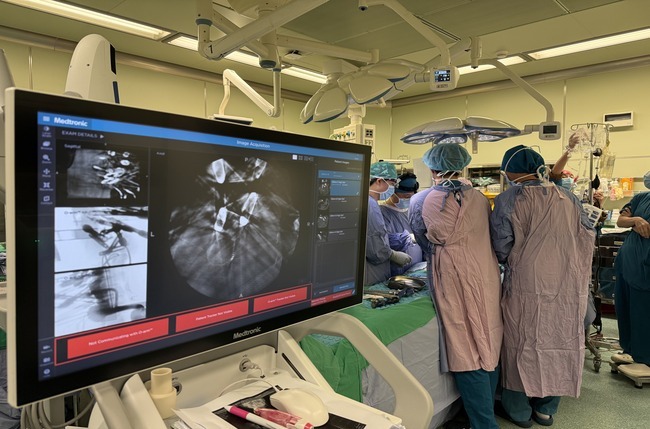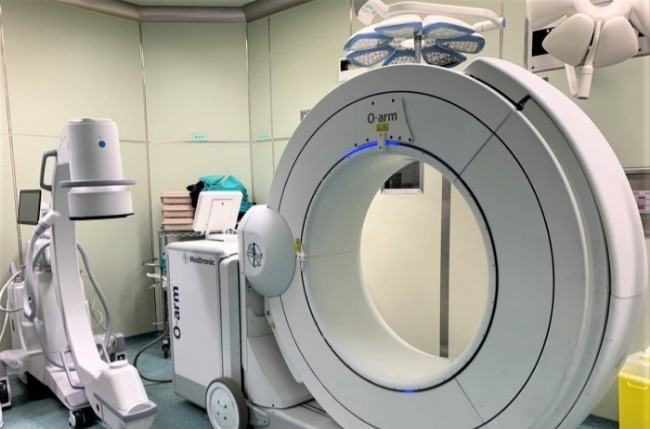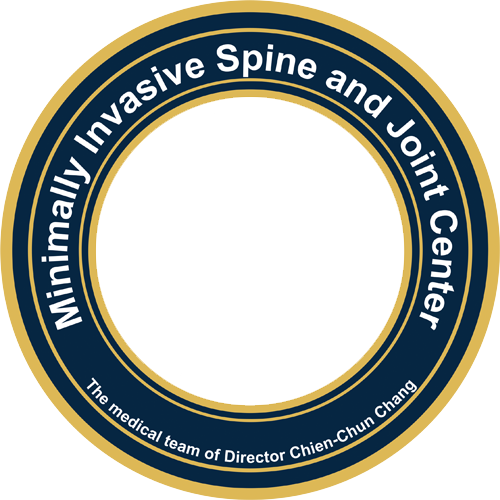
With advancements in medical technology, tools such as GPS navigation, commonly used in daily life, have now been effectively adapted for surgical procedures. Using 3D computer-assisted navigation spine surgery systems (O-arm), real-time 3D imaging during surgery provides precise localization and guidance for surgeons. This technology eliminates the need to retract nerves during the procedure, minimizing the risk of damage to surrounding spinal and neural structures. Additionally, it enhances surgical safety by reducing radiation exposure during the operation.
◎Key Surgical Features:
- Precision Navigation for Risk Reduction
- Minimally Invasive Surgery Without Rehabilitation (Get out of bed the next day; discharge in 2-5 days)



__25A15mm0OF.png)
3D Competer-assisted spine surgery
-

Real-Time 3D Navigation for Surgery
-

The O-arm computer-assisted navigation system
Conventional spine surgery vs. MIS spine Surgery
| Conventional surgery | 3D computer-assisted MIS spine surgery |
3D computer-assisted spine endoscopic surgery |
|
|---|---|---|---|
| Indications | Spondylolisthesis | Spondylolisthesis | Spinal stenosis & HIVD |
| Blood loss | 500ml | 100ml | 10ml |
| Incision size | 5-10cm | 4cm | 8mm |
| Anesthesia method | General anesthesia | General anesthesia | Local or general anesthesia |
| Hospital stay | At least 7-10 days | 4-6 days | 2 days |
| Postoperative Rehab | Longer Recovery Period | No need or less than 1 month |
No need |
Q1.Is spine fusion surgery covered by insurance?+
Spine fusion surgery is typically partially covered by national health insurance. Coverage includes anesthesia, hospitalization costs, and surgical fees. However, certain medical materials and specialized surgical techniques may require partial out-of-pocket payment by the patient.
Common self-funded medical materials include spine screws, spine cages, artificial bone, and specialized drills. Each item has options available under insurance or for self-payment.
The physician will recommend the most suitable medical materials based on the patient’s condition and health status, but the final decision is up to the patient.
Q2.What types of minimally invasive spine surgeries are available?+
The following types of minimally invasive spine surgeries are offered:
- 3D Computer-Assisted Minimally Invasive Spine Surgery
- 3D Computer-Assisted Minimally Invasive Revision Spine Surgery
- 3D Computer-Assisted Scoliosis and Kyphosis Correction Surgery
- 3D Computer-Assisted Minimally Invasive Anterior and Posterior Fusion Surgery (OLIF Surgery)
Q3.How soon can I be discharged after minimally invasive spine surgery? How long does it take to recover? Is rehabilitation necessary?+
Minimally invasive spine surgery allows for a faster discharge compared to traditional surgery. The hospital stay typically ranges from 1 to 7 days after surgery, depending on the patient’s condition and the type of procedure performed.
Overall, research shows that minimally invasive surgery significantly shortens both hospital stays and recovery periods compared to traditional surgery.
Regarding rehabilitation, due to less soft tissue damage, the recovery time is significantly reduced. Some patients may not require any rehabilitation following minimally invasive procedures.


















